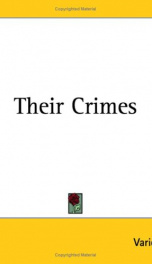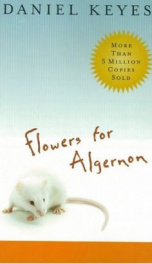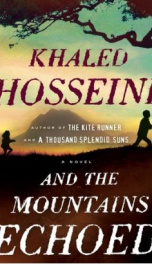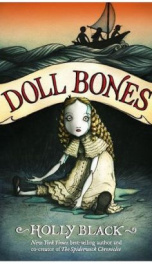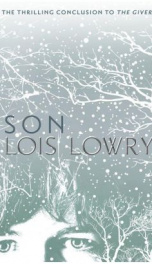Withering William
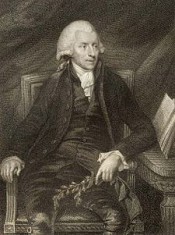
William Withering (17 March 1741 – 6 October 1799) was an English botanist, geologist, chemist, physician and the discoverer of digitalis. Withering was born in Wellington, Shropshire, trained as a physician and studied at the University of Edinburgh. He worked at Birmingham General Hospital from 1779. The story is that he noticed a person with dropsy (swelling from congestive heart failure) improve remarkably after taking a traditional herbal remedy; Withering became famous for recognising that the active ingredient in the mixture came from the foxglove plant.[1] The active ingredient is now known as digitalis, after the plant's scientific name. In 1785, Withering published An Account of the Foxglove and some of its Medical Uses, which contained reports on clinical trials and notes on digitalis effects and toxicity. Born in Wellington, Shropshire, England, he attended Edinburgh Medical School from 1762 to 1766. In 1767 he started as a consultant at Stafford Royal Infirmary. He married Helena Cookes (an amateur botanical illustrator, and erstwhile patient of his) in 1772; they had three children (the first, Helena was born in 1775 but died a few days later, William was born in 1776, and Charlotte in 1778). In 1775 he was appointed physician to Birmingham General Hospital (at the suggestion of Erasmus Darwin, a physician and founder member of the Lunar Society), but in 1783 he diagnosed himself as having pulmonary tuberculosis and went twice to Portugal hoping the better winter climate would improve his health; it didn't. On the way home from his second trip there, the ship he was in was chased by pirates. In 1785 he was elected a Fellow of the very prestigious Royal Society and also published his Account of the Foxglove (see below). The following year he leased Edgbaston Hall (now home to a golf club and nature reserve), in Birmingham, England. He was one of the members of the Lunar Society.[2] During the Birmingham riots of 1791 (in which Priestley's home was demolished) he prepared to flee from Edgbaston Hall, but his staff kept the rioters at bay until the military arrived. In 1799 he decided that he couldn't tolerate another winter in the cold and draughty Edgbaston Hall, so bought "The Larches" in the nearby Sparkbrook area; his wife did not feel up to the move and remained at Edgbaston Hall. Tragically, after moving to The Larches on 28 September, he died on 6 October 1799. He was buried on 10 October 1799 in Edgbaston Old Church next to Edgbaston Hall, Edgbaston, Birmingham, although the exact site of his grave is unknown. The memorial stone, now moved inside the church, has foxgloves and Witheringia solanaceae (see below) carved upon it to commemorate his discovery and his wider contribution to botany. He is also remembered by one of the Moonstones in Birmingham and by a blue plaque at Edgbaston Golf Club.[3] In 1776, he published The botanical arrangement of all the vegetables naturally growing in Great Britain, an early and influential British Flora. It was the first in English based on the then new Linnaean taxonomy — a classification of all living things — devised by the eminent Swedish botanist and physician Carolus Linnaeus (1707–1778). Withering wrote two more editions of this work in 1787 and 1792, in collaboration with fellow Lunar Society member Jonathan Stokes, and after his death his son (also William) published four more. It continued being published under various authors until 1877. Withering senior also carried out pioneering work into the identification of fungi and invented a folding pocket microscope for use on botanical field trips. In 1787 he was elected a Fellow of the Linnaean Society in recognition of his contribution to botany. Subsequently the plant Witheringia solanacea was named in his honour, and he became known on the continent of Europe as "The English Linnaeus". The standard botanical author abbreviation With. is applied to the entire species which includes With. solanacea. The William Withering Chair in Medicine at the University of Birmingham Medical School is named after him, as is the medical school's annual William Withering Lecture. He was an enthusiastic chemist and geologist. He conducted a series of experiments on Terra Ponderosa, a heavy ore from Cumberland, England. He deduced that it contained a hitherto undescribed element which he was unable to characterise. It was later shown to be barium carbonate and in 1789 the eminent German geologist Abraham Gottlob Werner named the mineral Witherite in his honour.[4] He also undertook analyses of the mineral content of a number of spa waters in England and abroad, notably at the medicinal spa at Caldas da Rainha in Portugal. This latter undertaking occurred during the winter of 1793-4, and he was subsequently elected to the Fellowship of the Royal Academy of Sciences of Portugal. Withering first learned of the use of Digitalis in "cardiac dropsy" (congestive heart failure) from an old woman who practiced as a folk herbalist in Shropshire, who used the plant as part of a polyherbal formulation containing over 20 different ingredients to successfully treat this condition.[5][6][7] Withering deduced that Digitalis was the "active" ingredient in the formulation, and over the ensuing nine years he carefully tried out different preparations of various parts of the plant (collected in different seasons) and documented 156 cases where he had employed digitalis, and described the effects and the best - and safest - way of using it. At least one of these cases was a patient whom Erasmus Darwin had asked Withering for his second opinion. In January 1785 Darwin submitted a paper entitled "An Account of the Successful Use of Foxglove in Some Dropsies and in Pulmonary Consumption" to the College of Physicians in London;[8] it was presented by Darwin in March of that year. A postscript[9] at the end of the published volume of transactions containing Darwin's paper states that "Whilst the last pages of this volume were in the press, Dr Withering of Birmingham... published a numerous collection of cases in which foxglove has been given, and frequently with good success". After this, Darwin and Withering became increasingly estranged, and eventually an horrendous argument broke out apparently resulting from Darwin having accused Withering of unprofessional behaviour by effectively poaching patients. This is a very early example of medical academic plagiarism. This list is drawn from Sheldon, 2004:[10]
do you like this author?
What readers are saying
What do you think? Write your own comment on this book!
write a commentWhat readers are saying
What do you think? Write your own comment on this author!
write a commentBook list

An Account of the Foxglove and some of its Medical UsesWith Practical Remarks on Dropsy and Other Diseases
Series:
Unknown
Year:
Unknown
Raiting:
4/5
Show more
add to favoritesadd In favorites

An Account of the Foxglove and some of its Medical Uses
Series:
Unknown
Year:
Unknown
Raiting:
2.5/5
CD-ROM Edition No illustrations, not an audio CD, not a DVD, produced in a Microsoft Word Compatible format for reading, printing or research. William Withering (17 March 1741 6 October 1799) was an English botanist, geologist, chemist, physician and the discoverer of digitalis.
Show more
add to favoritesadd In favorites
Book list

An Account of the Foxglove and some of its Medical UsesWith Practical Remarks on Dropsy and Other Diseases
Series:
Unknown
Year:
Unknown
Raiting:
4/5
Show more
add to favoritesadd In favorites

An Account of the Foxglove and some of its Medical Uses
Series:
Unknown
Year:
Unknown
Raiting:
2.5/5
CD-ROM Edition No illustrations, not an audio CD, not a DVD, produced in a Microsoft Word Compatible format for reading, printing or research. William Withering (17 March 1741 6 October 1799) was an English botanist, geologist, chemist, physician and the discoverer of digitalis.
Show more
add to favoritesadd In favorites
What readers are saying
What do you think? Write your own comment on this author!
write a commentif you like Withering William try:
readers also enjoyed
What readers are saying
What do you think? Write your own comment on this author!
write a commentif you like Withering William try:
readers also enjoyed
Do you want to read a book that interests you? It’s EASY!
Create an account and send a request for reading to other users on the Webpage of the book!

